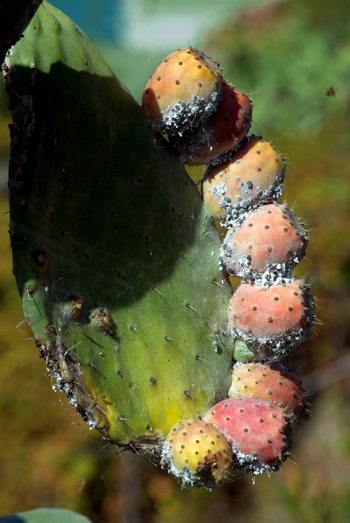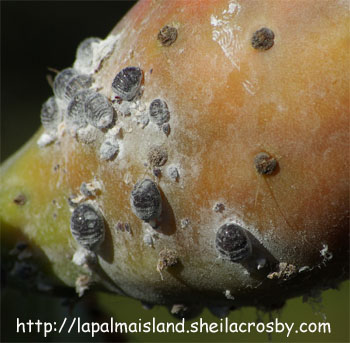Cochineal and Prickerly Pears

In the 1850s the export market for Palmeran wine collapsed, and somebody had the bright idea of going into cochineal production. Before the advent of synthetic dyes, this was far and away the best red dye available, particularly for wool. For one thing, it doesn't fade.
Cochineal is made from a parasitic insect (Dactylopius coccus), which lives on prickly pears (tuneras), so the plants and insects were imported from Mexico. In this climate, prickly pears grow without needing any special attention. In fact they have a tendency to take over your garden if you don't fight back. The insects thrive on neglect, too.
Peasants collected the pale gray females, which were then dried and ground up to produce the dye. Although collecting the insects was labour intensive, soon it was the mainstay of the island's economy.
And then some rotten so-and-so invented synthetic alizarine dye, which was much cheaper. The bottom fell out of the cochineal market.
There's still a small market for cochineal, because it's safe to use in food and cosmetics. And of course you can eat the prickly pears. They're harvested using giant wooden tongs, and eaten with a knife and fork, to avoid the spines.

Labels: animals, Canaries, Canary Island flora, Canary islands, fauna, flora, insects cochineal, La Palma, Plants Canary island fauna
Bookmark with:
 Del.icio.us Del.icio.us
|
 Digg Digg
|
 Reddit Reddit
|
 Facebook Facebook
|
 Furl It Furl It
|
 Newsvine Newsvine
|
|



0 Comments:
Post a Comment
<< Home